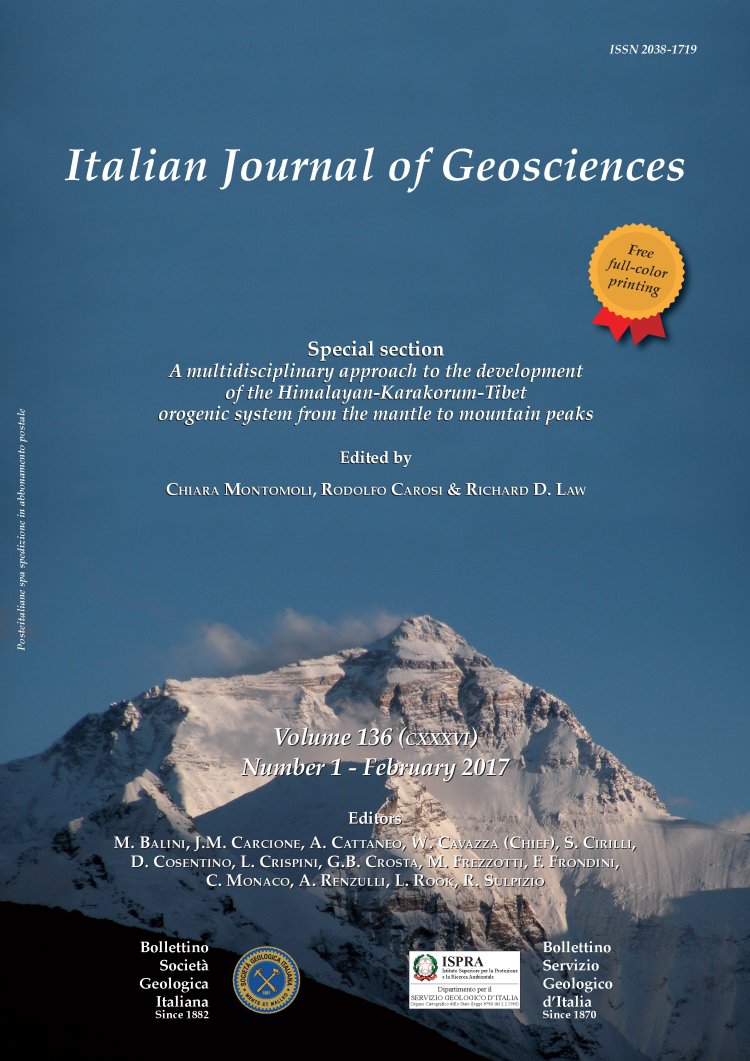
Geodynamic implications of temporal gravity changes over Tibetan Plateau
Carla Braitenberg (*) & C.K. Shum (**,***)
(*) Dept. of Mathematics and Geosciences, University of Trieste, Via Weiss 1, 34100 Trieste, Italy. Corresponding author e-mail: berg@units.it.
(**) Division of Geodetic Science, School of Earth Sciences, Ohio State University, Columbus, Ohio 43210, USA., e-mail: ckshum@osu.edu
(***) State Key Laboratory of Geodesy and Earth's Dynamics. Institute of Geodesy & Geophysics, Chinese Academy of Sciences, Wuhan 430077, China.
Volume: 136 (2017) f.1
Pages: 39-49
Abstract
The Tibetan Plateau is one of the most geologically dynamic systems and the highest plateau in the world with ongoing three-dimensional crustal deformation. The Plateau is uplifting and deforming horizontally as observed by present-day global navigation satellite system (GNSS) and repeated leveling measurements. Crustal mass is conservative and less dense than the mantle, thus the horizontal shortening must be accompanied by crustal thickening and horizontal extrusion. According to the level of isostatic compensation, the thickening is partitioned into topographic uplift and Moho deepening. Here, we investigate the mass change induced gravity signal observed at or near the crust, and discuss whether this signal could be detected using terrestrial or satellite gravity observations. We set up a model for the Tibetan Plateau crustal thickening and calculate the expected gravity signal. The predictions are then compared with the present-day gravity changes observed by GRACE and with published in situ absolute gravity rates. We conclude that the crustal thickening signal cannot be neglected and that it contributes significantly to the observed signal. Those studies with focus on the mountain glacier and hydrologic mass fluxes should be aware that, if neglected, the crustal signal could introduce a significant bias. The observations give a positive gravity rate over central Tibetan Plateau, unexplained by the hydrologic or cryospheric signals, and a negative rate over the Himalayas and at its foothill, which is attributable to terrestrial hydrologic signals including human depletion of groundwater. Our model shows that the positive gravity rate could be explained by elevation uplift, and a stable or upwelling Moho. The negative gravity change signal is due primarily to the strong elevation-gradient at the foothill of the Himalayas, and to an uplift accompanied by crustal thickening and Moho lowering. The estimated gravity rates can be used when defining the requirements on future gravity missions, as the tectonic signal should be resolved in order to improve its separation from hydrologic and/or cryospheric processes generating a gravity change.
Keywords
Get Full Text